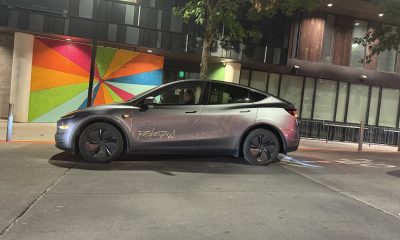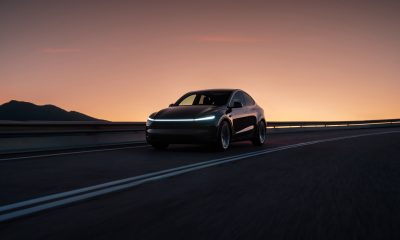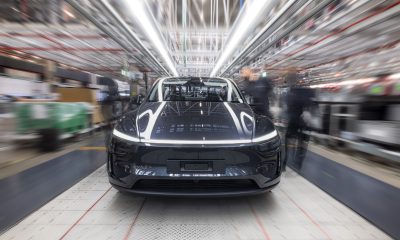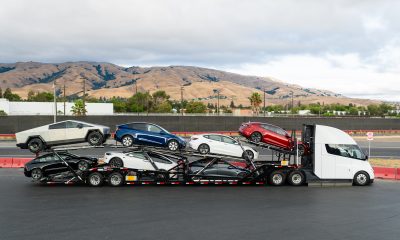Elon Musk
Tesla Semi fleet from Frito-Lay gets more charging at Bakersfield factory
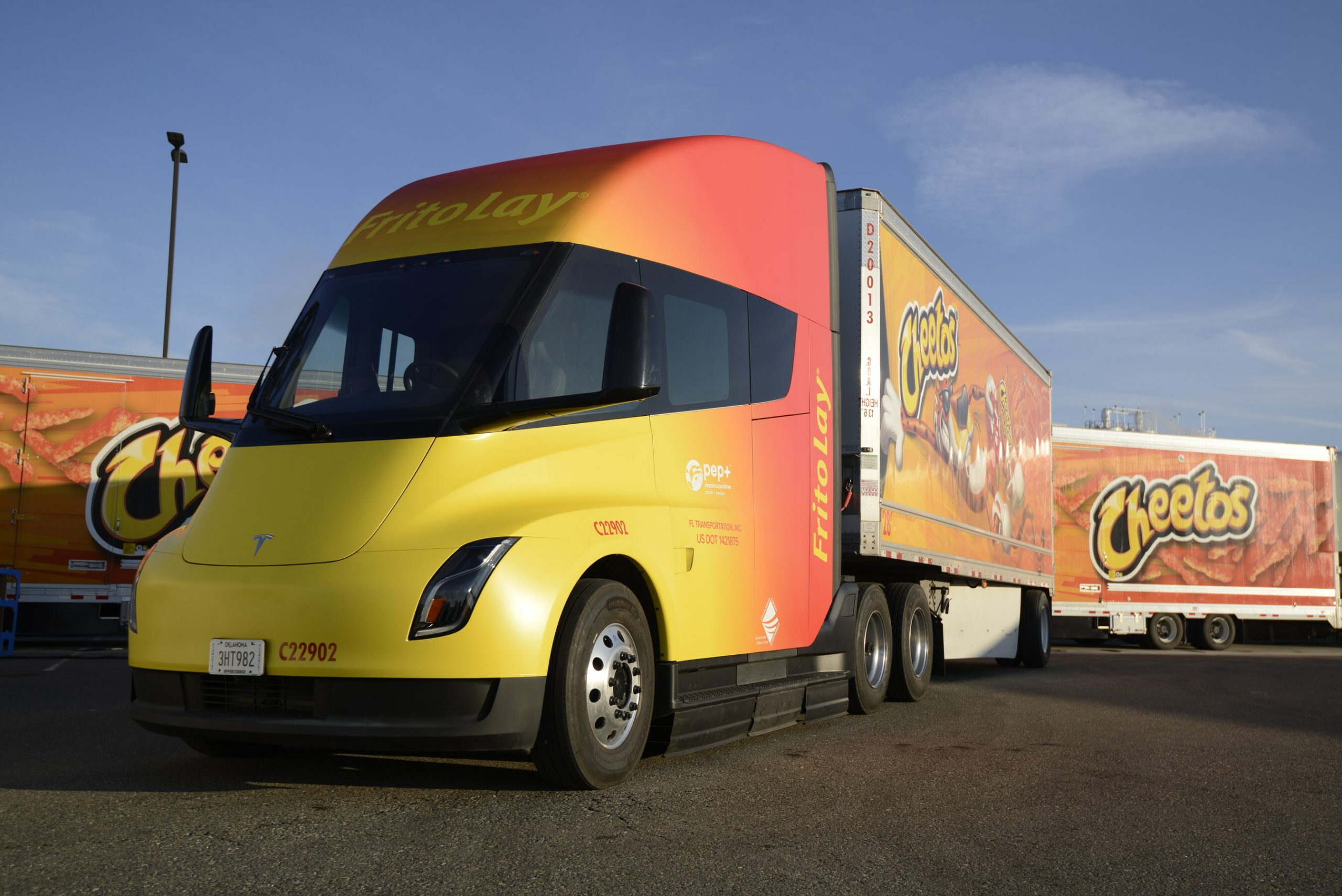
Among the several companies that have had the opportunity to add Tesla Semi all-electric Class 8 trucks to their fleets earlier than others, the most notable is arguably Frito-Lay, which has utilized the vehicle for a couple of years now.
However, as their fleet is making more local runs and there are undoubtedly plans to expand to more Semi units, the company has recognized it needs additional Megachargers to give juice to their trucks.
As a result, Frit-Lay decided to build more chargers at their Bakersfield, California facility, according to new permits filed by Tesla:
🚨 Frito-Lay is building an 8-stall Megacharger array at its factory in Bakersfield, California https://t.co/qARfJjogXF pic.twitter.com/gvorIVxsoc
— TESLARATI (@Teslarati) April 18, 2025
There are already chargers at the company’s Modesto, California, factory, but Bakersfield is roughly three hours south of Modesto.
Interestingly, Tesla is calling the chargers “Semi Chargers” in the filing, potentially hinting that it is no longer referring to them as “Megachargers,” as they have been in the past. This is a relatively minor detail, but it is worth taking note of.
In 2022, Frito-Lay began installing these chargers in preparation for the Semi to become one of the company’s main logistics tools for deliveries in California and surrounding states.
Frito-Lay is not the only company that has chosen to utilize the Tesla Semi for these early “pilot” runs. PepsiCo has also been a company that has used the Semi very publicly over the past two years.
Additionally, the Tesla Semi participated in the Run on Less EV trucking study back in late 2023, where it managed to complete a 1,000-mile run in a single day:
Tesla is planning to ramp production of the Semi late this year. On the Q4 2024 Earnings Call, VP of Vehicle Engineering Lars Moravy said the company would be focusing on the first builds of the Semi’s high-volume design late this year before ramping production in the early portion of 2026:
“We just closed out the Semi factory roof and walls last week in Reno, a schedule which is great with the weather. In Reno, you never know what’s going to happen. But we’re prepping for mechanical installation of all the equipment in the coming months. The first builds of the high-volume Semi design will come late this year in 2025 and begin ramping early in 2026.”
Tesla will build these units at a new Semi production facility located in Reno near its Gigafactory. The company is getting closer to finishing construction, as a drone video from this morning showed the facility is coming along at a good pace:
🚨Tesla Semi factory progress update: pic.twitter.com/dlzIjKwfT3
— TESLARATI (@Teslarati) April 18, 2025
Elon Musk
Tesla looks to expand Robotaxi geofence once again with testing in new area
It looks as if Tesla is preparing for its next expansion of the geofence, potentially moving toward a much larger service area that could eclipse 150 square miles.

Tesla looks to be preparing for the potential expansion of the Robotaxi geofence once again, as the company was spotted testing the suite in an area well outside of the Austin service area.
After it first launched the Robotaxi platform on June 22, Tesla has managed to expand its geofence twice, essentially doubling the travel area both times.
The most recent expansion took the size of the geofence from 42 square miles to about 80 square miles, bringing new neighborhoods and regions of the city into the realm of where the driverless vehicles could take passengers.
However, it looks as if Tesla is preparing for its next expansion of the geofence, potentially moving toward a much larger service area that could eclipse 150 square miles.
Over the weekend, one fan noticed a Robotaxi validation vehicle testing in Bee Cave, Texas, which is roughly 25 minutes from the edge of the current geofence:
Tesla spotted doing Robotaxi validation testing in Bee Cave, Texas, about 15 miles west of Austin (20-25 minute drive from current edge of geofence). pic.twitter.com/JCOcoys8SJ
— Sawyer Merritt (@SawyerMerritt) August 23, 2025
Tesla has been testing vehicles in the western suburbs of Austin for some time, and it seems the company is laying some groundwork to push its geofence expansion into Plaid Mode as competition with Waymo continues to be at the forefront of the conversation.
Waymo has been expanding with Tesla for some time, as the pace of expansion for the two companies has been relatively accelerated for the past couple of months.
Tesla’s expansions of the geofence sent a clear message to competitors and doubters, but it is still aiming to keep things safe and not push the envelope too quickly.
The geofence expansion is impressive, but Tesla is also focusing on expanding its vehicle fleet in both Austin and the Bay Area, where it launched a ride-hailing service in July.
Tesla Bay Area autonomous fleet to grow to over 100 units: Elon Musk
Still, safety is the priority at the current time.
“We are being very cautious. We do not want to take any chances, so we are going to go cautiously. But the service areas and the number of vehicles in operation will increase at a hyper-exponential rate,” CEO Elon Musk said during the Q2 Earnings Call.
Elon Musk
Elon Musk argues lidar and radar make self driving cars more dangerous
The CEO is not just stating that using sensors like lidar is unnecessary to achieve self-driving.
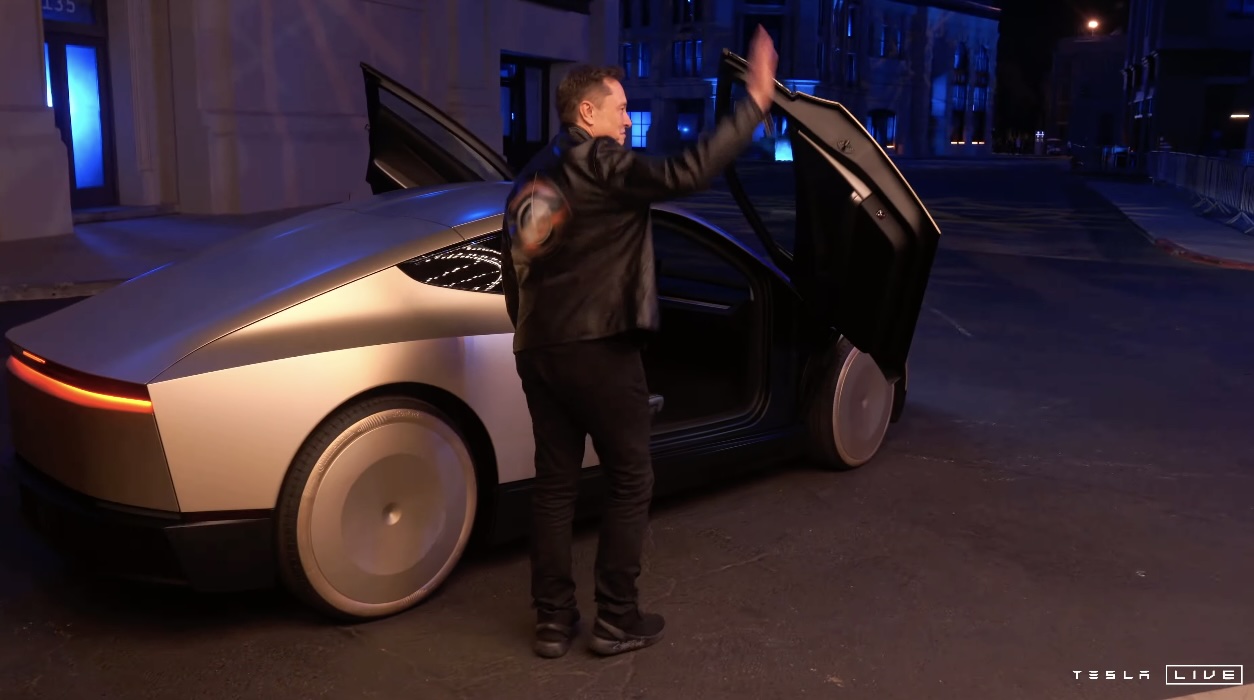
Elon Musk is taking a firmer stance in the vision vs lidar debate for autonomous driving. In his more recent comments, the CEO is not just stating that using sensors like lidar is unnecessary to achieve self-driving.
Musk is stating that using lidar actually makes self-driving cars more dangerous.
Uber CEO’s comments
During a recent interview, Uber CEO Dara Khosrowshahi shared his thoughts on the autonomy race. As per the CEO, he is still inclined to believe that Waymo’s approach, which requires outfitting cars with equipment such as lidar and radar, is necessary to achieve superhuman levels of safety for self-driving cars.
“Solid state LiDAR is $500. Why not include lidar as well in order to achieve super human safety. All of our partners are using a combination of camera, radar and LiDAR, and I personally think that’s the right solution, but I could be proven wrong,” the Uber CEO noted.
Elon Musk’s rebuttal
In response to the Uber CEO’s comments, Elon Musk stated that lidar and radar, at least based on Tesla’s experience, actually reduce safety instead of improving it. As per the Tesla CEO, there are times when sensors such as lidar and radar disagree with cameras. This creates sensor ambiguity, which, in turn, creates more risk. Musk then noted that Tesla has seen an improvement in safety once the company focused on a vision only approach.
“Lidar and radar reduce safety due to sensor contention. If lidars/radars disagree with cameras, which one wins? This sensor ambiguity causes increased, not decreased, risk. That’s why Waymos can’t drive on highways. We turned off the radars in Teslas to increase safety. Cameras ftw,’ Musk wrote.
Musk’s comments are quite notable as Tesla was able to launch a dedicated Robotaxi pilot in Austin and the Bay Area using its vision-based autonomous systems. The same is true for FSD, which is quickly becoming notably better than humans in driving.
Elon Musk
SpaceX Starship Flight 10: What to expect
SpaceX implemented hardware and operational changes aimed at improving Starship’s reliability.
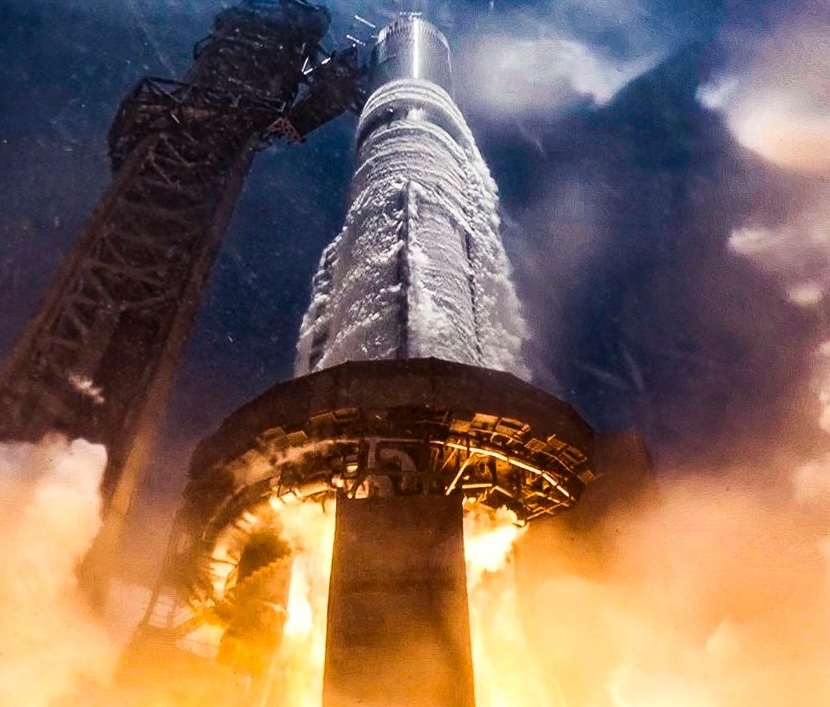
SpaceX is preparing to launch the tenth test flight of its Starship vehicle as early as Sunday, August 24, with the launch window opening at 6:30 p.m. CT.
The mission follows investigations into anomalies from earlier flights, including the loss of Starship on its ninth test and a Ship 36 static fire issue. SpaceX has since implemented hardware and operational changes aimed at improving Starship’s reliability.
Booster landing burns and flight experiments
The upcoming Starship Flight 10 will expand Super Heavy’s flight envelope with multiple landing burn trials. Following stage separation, the booster will attempt a controlled flip and boostback burn before heading to an offshore splashdown in the Gulf of America. One of the three center engines typically used for landing will be intentionally disabled, allowing engineers to evaluate whether a backup engine can complete the maneuver, according to a post from SpaceX.
The booster will also transition to a two-engine configuration for the final phase, hovering briefly above the water before shutdown and drop. These experiments are designed to simulate off-nominal scenarios and generate real-world data on performance under varying conditions, while maximizing propellant use during ascent to enable heavier payloads.
Starship upper stage reentry tests
The Starship upper stage will attempt multiple in-space objectives, including deployment of eight Starlink simulators and a planned Raptor engine relight. SpaceX will also continue testing reentry systems with several modifications. A section of thermal protection tiles has been removed to expose vulnerable areas, while new metallic tile designs, including one with active cooling, will be trialed.
Catch fittings have been installed to evaluate their thermal and structural performance, and adjustments to the tile line will address hot spots observed on Flight 6. The reentry profile is expected to push the structural limits of Starship’s rear flaps at maximum entry pressure.
SpaceX says lessons from these tests are critical to refining the next-generation Starship and Super Heavy vehicles. With Starfactory production ramping in Texas and new launch infrastructure under development in Florida, the company is pushing to hit its goal of achieving a fully reusable orbital launch system.
-
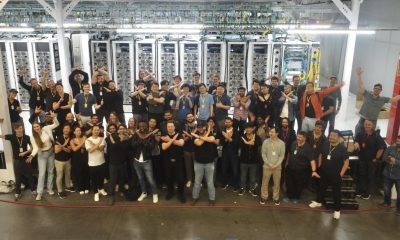
 Elon Musk3 days ago
Elon Musk3 days agoElon Musk takes aim at Bill Gates’ Microsoft with new AI venture “Macrohard”
-
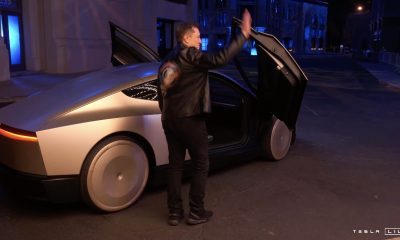
 Elon Musk13 hours ago
Elon Musk13 hours agoElon Musk argues lidar and radar make self driving cars more dangerous
-

 News2 weeks ago
News2 weeks agoElon Musk reaffirms Tesla Semi mass production in 2026
-
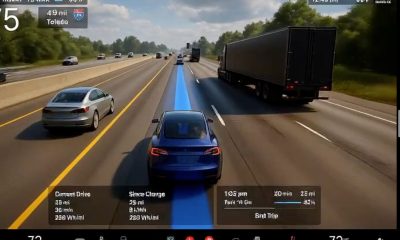
 News2 weeks ago
News2 weeks agoTesla plans to use Unreal Engine for driver visualization with crazy upgrade
-
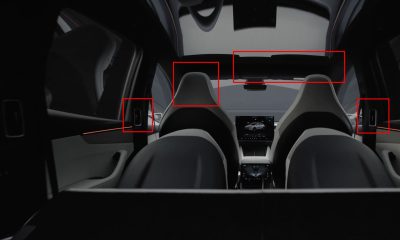
 News1 week ago
News1 week agoTesla Model Y L: new features that make it better than the standard Model Y
-
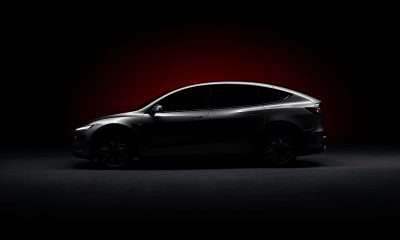
 News2 weeks ago
News2 weeks agoTesla Model Y L spotted in Europe ahead of expected September China launch
-
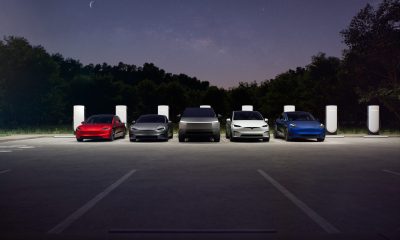
 Elon Musk2 weeks ago
Elon Musk2 weeks agoTesla warns consumers of huge, time-sensitive change coming soon
-
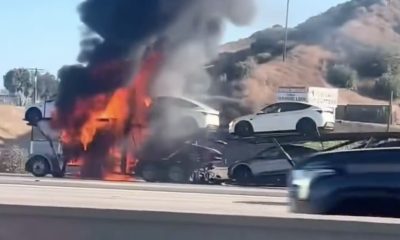
 News1 week ago
News1 week agoTesla clarifies LA car carrier fire started in diesel semi, not EV batteries


